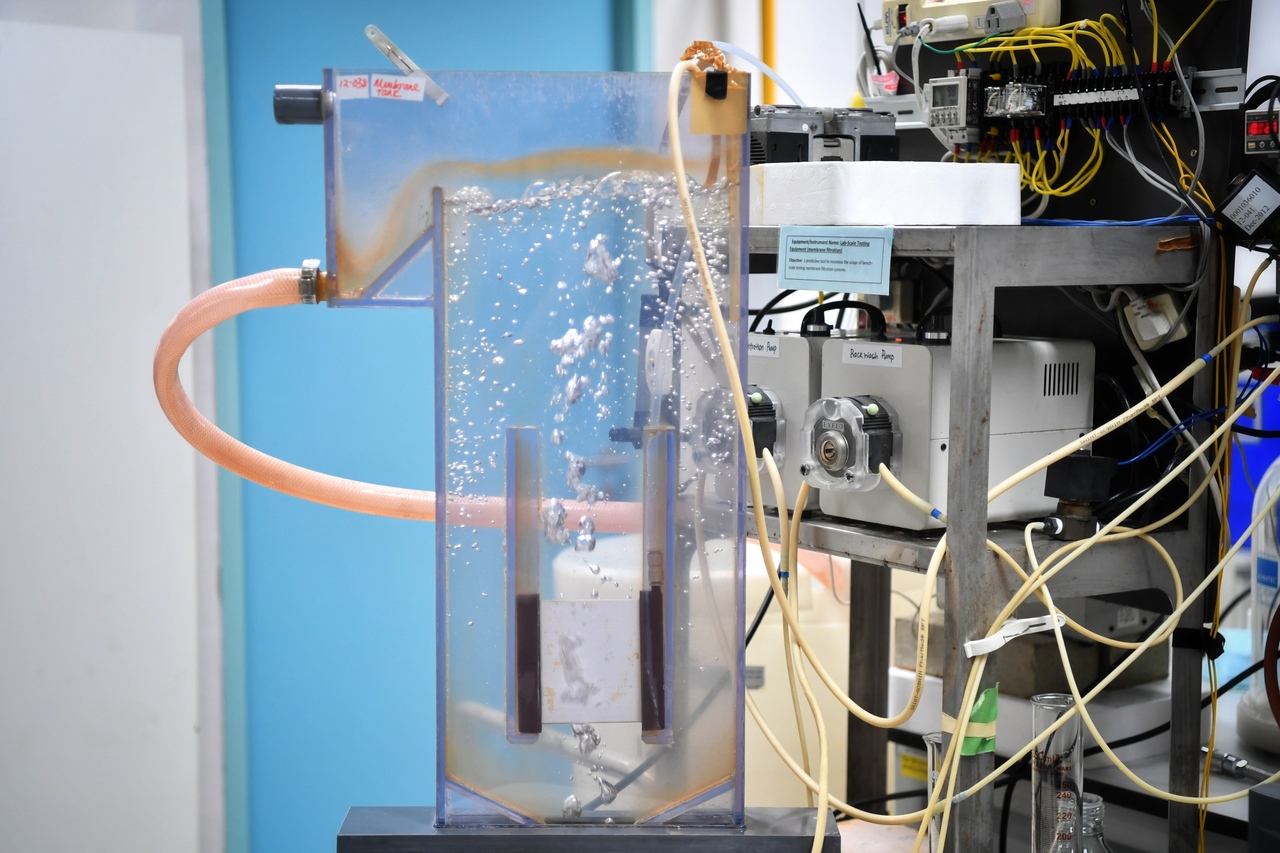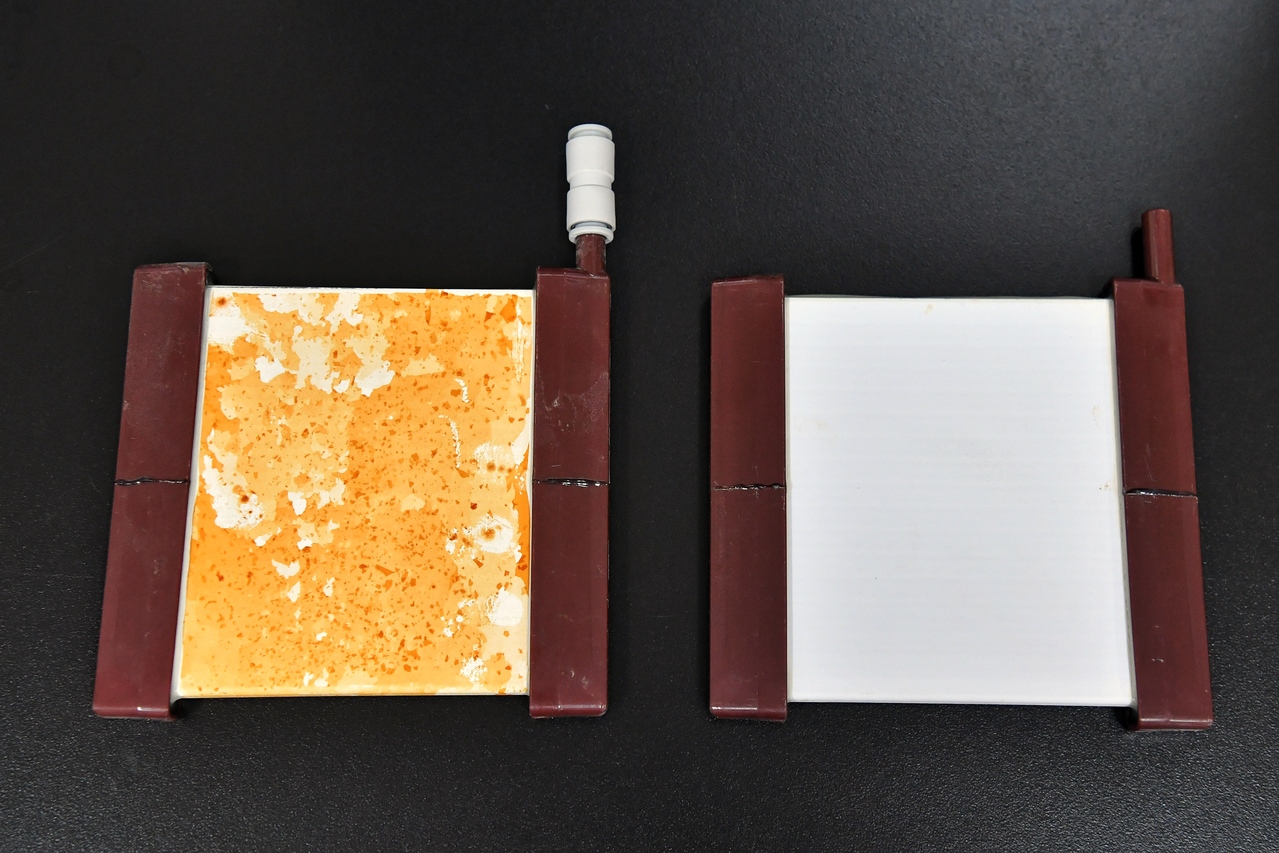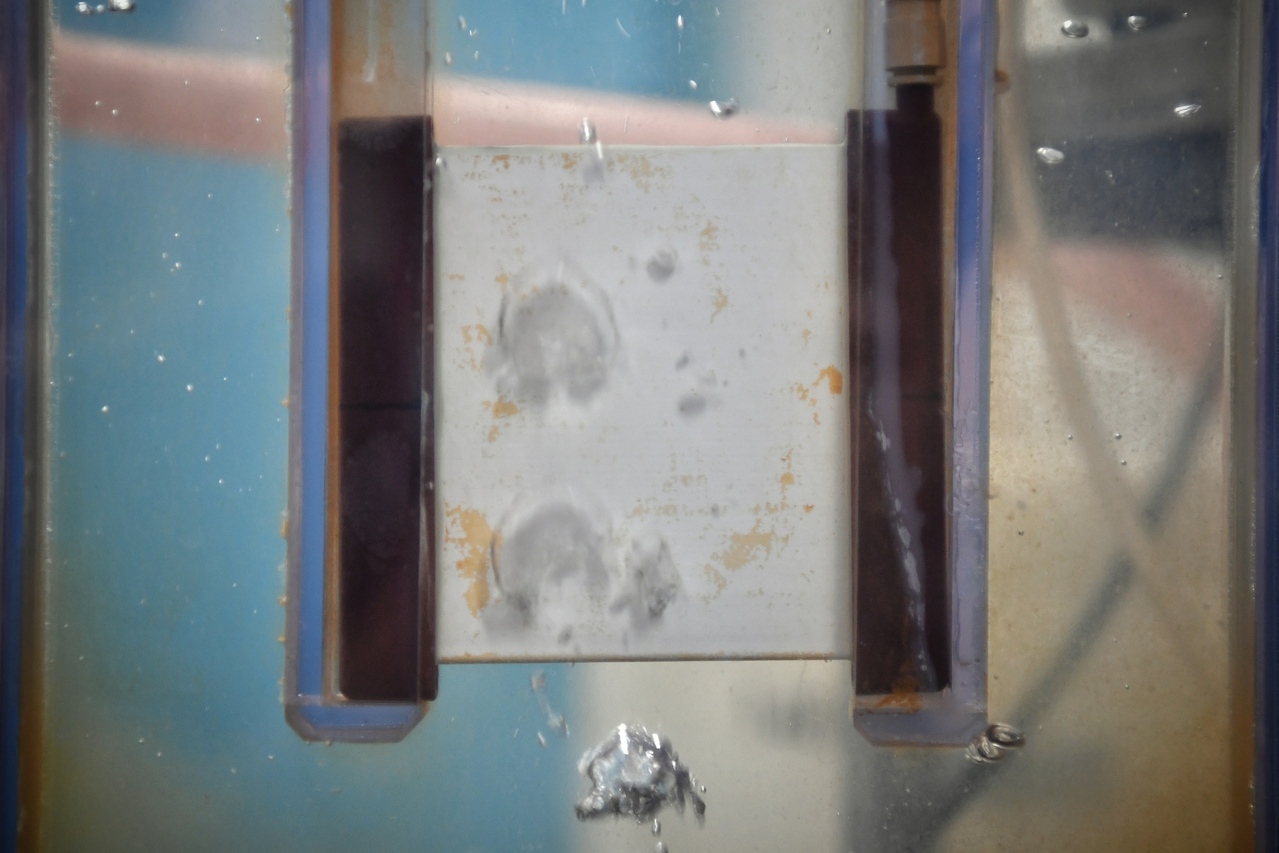Mangrove-inspired membranes for desalination among new tech being tested by PUB
Sign up now: Get ST's newsletters delivered to your inbox

A photo of membrane bench test taken at Japanese water tech firm Meiden Singapore on April 7, 2022.
ST PHOTO: CHONG JUN LIANG
Follow topic:
SINGAPORE - National water agency PUB is trialling new technology that aims to make the energy-intensive desalination process more efficient.
Achieving this will help to boost the country's water and energy security, especially as the Republic moves to reduce its reliance on fossil fuels for energy.
Two new types of membranes will be tested at PUB's research and development plant in Tuas to see if these are more durable, cost-efficient and energy-saving compared with the usual polymeric membranes used in the process to convert seawater to drinkable water, said Dr Pang Chee Meng, PUB's chief engineering and technology officer.
The two types include ceramic membranes, and those made from material that mimics proteins found in nature.
Singapore, which lacks natural water resources, counts desalination as a way for it to safeguard its water security.
Other strategies include importing water from Malaysia, collecting rainwater in reservoirs and treating used water.
But the desalination process is known to be energy-intensive, with traditional methods currently using about 3.5 kilowatt-hour (kWh) of electricity per cubic m of water.
This is because high pressure is needed during the reverse osmosis process to push water through the polymeric membranes to filter out salts.
PUB aims to reduce the system-level energy consumption of desalination to less than 2kWh per cubic m.
Ceramic membranes, which are being tested in other water treatment facilities here, are known to have longer lifespans, higher permeability and more robust chemical and physical properties.
Trials are also ongoing with Japanese water tech firm Meiden Singapore to determine the resilience of these ceramic membranes to various algal concentrations to ensure that they can withstand severe algae blooms, Dr Pang said.
Such blooms can occur in marine environments.
The company is currently constructing a 120 m3/day pilot at PUB's Tuas R&D Facility, which will be ready this month (April).
Biomimetic membranes, on the other hand, are so-called for the way they mimic natural biological systems, such as those found in mangroves.
Mangrove trees, which grow in seawater, have the unique ability to filter out high concentrations of salt from the water they take in.
They can also transport water from their roots up to the rest of the plant with minimal resistance.

Close up photo of a used membrane (left) and a clean piece of membrane. Photo taken on April 7, 2022. ST PHOTO: CHONG JUN LIANG
PHOTO: ST
Developing membranes that mimic these abilities can save a significant amount of energy because lower operation pressure would be required to operate the desalting process, said Dr Pang.
PUB is working with the Nanyang Environment And Water Research Institute (Newri) at Nanyang Technological University (NTU) to develop membranes which are enhanced with aquaporin proteins or synthetic biomolecules that help to improve their permeability.
Aquaporins are proteins found in living organisms that enhance the transfer of water through a cell membrane, while synthetic biomolecules are a new innovation that replicate the effect of these aquaporins - at a lower cost.
Professor Wang Rong, director of the Singapore Membrane Technology Centre at Newri, said these membranes are able to achieve at least a 50 per cent enhancement in water permeability compared with commercial ones for seawater desalination.
A 10 m3/day pilot to scale up Newri's aquaporin-based biomimetic membranes is currently being constructed at the Tuas R&D Facility.
It will be ready in Sept this year, and the pilot will last for six months.
Biomimetic membranes have also been used in the production of Newater - Singapore's brand of treated used water - and are currently being piloted at the Ulu Pandan Newater plant at a capacity of 14 m3/day.
Dr Pang told The Straits Times that a new desalination integrated validation plant will be located in Pasir Ris by next year.
It will integrate, configure and optimise some of these technologies - including the ceramic and biomimetic membranes - to validate if lower energy consumption and better performance can be achieved for desalination.

A membrane bench test. Ceramic membranes have been applied in large scale potable water and used water treatment plants.ST PHOTO: CHONG JUN LIANG
PHOTO: ST
PUB had last October set itself a target of having emissions produced from water treatment processes in Singapore reach net-zero by mid-century.
Other than doing research into new technologies, the agency is also moving to cut the carbon footprint of the water sector by increasing its use of renewable energy.
For instance, the 60 megawatt-peak (MWp) solar farm in Tengeh Reservoir will power all five of its water treatment plants which convert reservoir water into drinking water.
Dr Adil Dhalla, managing director of the Separation Technologies Applied Research and Translation Centre at NTU, said: "As Singapore moves towards including more renewable and clean sources of energy, any reduction in the use of fossil fuels would in turn make the water treatment process more sustainable.
"The other key goal is to improve the overall energy efficiency of the water treatment process. This of course includes more efficient membranes which work at lower pressure, but, equally important, systems level process innovations in the overall desalination process, not just the filtration step," he added.


